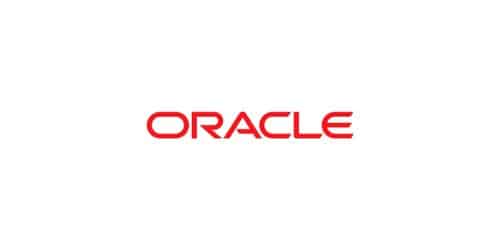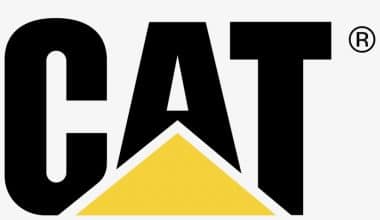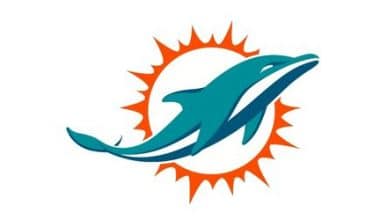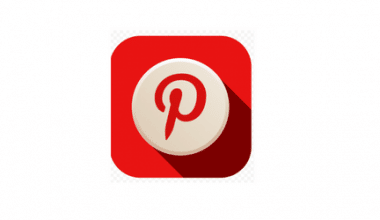Oracle is a multinational company that makes and sells software for businesses. It was first called Software Development Laboratories from 1977 to 1979, then Relational Software Inc. from 1979 to 1982, and then Oracle Systems Corporation from 1982 to 1995. Oracle Database is a relational database management system developed by the company. In 2010, Oracle purchased Sun Microsystems, expanding its product offerings to include computer systems and software, including Solaris and Java. Oracle’s headquarters can be found in Redwood Shores. Here, in this post, is more information on the Oracle logo font, Park, NetSuite and HCM team, and the history behind the name.
Oracle Logo Font
In its early days, the company’s name was Software Development Laboratories. After five years, the company rebranded as Oracle Systems Corporation, necessitating a new logo. The company has come up with two different logos: the Oracle Signature and the Oracle Red Badge. In the Signature Oracle logo, the name of the company is written in red on a white background. The wordmark is virtually the same, but the hues have been flipped: now the company’s name is shown in white on a red background. You can also use an RGB gradient that you made yourself to show on the screen.
The History of Oracle Corporation Font
Oracle Corporation, a multinational technology company, has therefore come a long way to get where it is now. Oracle has grown over its long history by making and selling commercial software and hardware, as well as promoting its own well-known database technology.
The History of Oracle 1970s
Larry Ellison, Bob Miner, and Ed Oates started Software Development Laboratories (SDL) on June 16, 1977, in Santa Clara, California. In 1978, the first iteration of Oracle was developed. It made use of a PDP-11 with an RSX-11 and 128K of RAM. In assembly language, it was created. Oracle version 1 was made with user code that was kept separate from Oracle code, but it was never made available to the general public. When the first three founders of Oracle were still working for Amex, they worked together on a CIA project under the name Oracle.
In June 1979, Software Development Laboratories moved to Menlo Park, California, and also changed its name to Relational Systems Inc. (RSI). In that year, they made the first SQL RDBMS (relational database management system) available for sale. The PDP-11-based Oracle Database software marked the introduction of Oracle’s second iteration. Ellison, Miner, and Oates chose the name Oracle v2 because they thought customers would be hesitant to buy a product’s initial release. In October 1979, RSI began actively promoting Oracle on the VAX platform.
The History of Oracle 1980s
In 1981, Umang Gupta began working with RSI. Later, he gave ideas for the business plan, and the company made him vice president and general manager. To better reflect the nature of their main product, RSI changed the name of their company to Oracle Systems Corporation in 1982. In March 1983, Oracle Database was rewritten in C to make it portable. A VAX-mode database was also made available along with Oracle v3. Oracle v4 the first database of its sort with this capability was released not long after, in October 1984. It was easily readable. In November 1984, the 512K memory-hungry Oracle Database program for MS-DOS (4.1.4), was also moved to the PC platform.
When Oracle v5 was introduced in April 1985, it was among the first RDBMSs to operate in client-server mode. In 1986, when Oracle v5 MS-DOS was released, Mike Roberts’ technique made it possible for it to run in protected mode on approximately 286 PCs. This was one of the initial things that was done. The company also began investigating clustering and released Oracle v5.1 with support for distributed queries. Oracle also offered a client-server DBMS this year.
On March 12th, 1986, Oracle went public with revenues of $55 million. So, in 1987, the first UNIX-based Oracle applications came out, and in 1988, Oracle v6 came out with row-level locking, hot backups, and an integrated PL/SQL procedural engine. In 1988, Oracle released PL/SQL. The company’s global headquarters were relocated to Redwood Shores, California, in 1989 as a result of its growth, and at that time, its sales reached a peak of $584 million.
The History of Oracle 1990s
So, Oracle had its first-ever loss in the third quarter of 1990, which caused hundreds of people to lose their jobs. A few of the new features included with the release of Oracle 7 in June 1992 included application development tools, performance enhancements, the capacity to store PL/SQL program units as stored procedures and triggers, administration utilities, support for declarative referential integrity, and security features. During this year, Oracle also began providing a complete application installation strategy.
On June 1st, 1995, Oracle Systems Corporation thus announced a merger between Oracle Corporation and Oracle Systems Corporation. By getting rid of the holding company structure, this merger broke the link between the operating company (Oracle Corporation) and the public holding company (Oracle Systems Corporation). As a condition of the agreement, Oracle Systems Company had to also change its name to Oracle Company and become a Delaware corporation.
The first 64-bit RDBMS was made available by Oracle in November 1995, and it was also among the first large software companies to create an Internet strategy. They made the switch to open, web-enabled architecture in 1996 by adding the Web Browser as a part of Oracle PowerBrowser. Oracle’s Discoverer came out in April 1997. In June of the same year, Oracle v8, which could handle terabytes of data and included SQL object technology, came out. When Oracle Jdeveloper, their Java-integrated development environment, came out in September of that same year, the Java platform was officially supported by Oracle.
1998 was a turning point for Oracle Corporation as a result of the release of Oracle Applications 2 in May and the news in April that Java Virtual Machine will be integrated with Oracle Database. In September and October, respectively, Oracle 8i I (where I stands for Internet), Oracle 8, and Oracle Application Server 4.0 were all made available for Linux. In 1999, Oracle Corporation released the first version of a DBMS that supported XML.
Oracle Logo Font Symbol
Oracle’s hardware bears a logo that combines two logos, one for Oracle itself and the other for Sun Microsystems, Inc., a firm that Oracle acquired in 2010 and which went out of business shortly after.
The Sun logo created by Stanford professor Vaughan Pratt began as an orange circle, then turned blue, and is now gray. The square was flipped from its original horizontal orientation in 1983.
Oracle Logo Font
One of the things that helps the wordmark seem well is the bespoke font, which is simple but instantly recognized. The transparent sans-serif typeface, however, has a distinctive appearance, with the letters “E,” “A,” and “R” standing out as the most peculiar.
Oracle Logo Font Color
Both logos use the same red color, which Oracle refers to as “Oracle Red” (Pantone PMS 485). A touch of white helps set off the color. Black-and-white versions may be utilized in some contexts, such as newspapers.
The logo contrasts two different font styles inside the same word. The “Net” portion is set in a typeface very similar to Touche Bold by the Indian Type Foundry. Supra Mezzo Normal, a typeface produced by the Wiescher-Design studio, was used to pen the second part (“Suite”) at the same time. The “U” is somewhat different from the original, but that’s the only change.
The calm color scheme is fitting for a service geared at serious businesspeople, who need to be able to focus. Colors like blue, light blue, and black make up the corporate color palette.
Can I use the name Oracle?
Oracle trademarks are adjectives, not nouns, and therefore don’t belong in the possessive or plural. Examples include “Oracle database’s benefits..” rather than “Oracle’s benefits.”
Can A Male Be An Oracle?
Tibetans refer to the spirit that enters those people who serve as intermediaries between the physical and spiritual worlds as “oracles” in order to describe them. Thus, the media are referred to as kuten, which literally translates as “the physical basis.”
What is A Female Oracle Called?
A woman known as an oracle or prophet in ancient Rome was called SIBYLS.
What is the Logo of Oracle?
The Oracle Signature and the Oracle Red Badge are the two variations of the company’s logo that were created. The company name (in red) is displayed on a white background in the Oracle Signature logo. The firm name is displayed in white on a red background in the wordmark, despite the colors being inverted.
What kind of Company is Oracle?
The software and services provided by Oracle, a company in the computer industry, thus include Java. Oracle also provides its database management systems and cloud-engineering services and solutions through the four primary business sectors of the company: cloud and license, hardware, and services.
Can I Use Oracle Logo?
Keep in mind that unless you have a specific license or authorization to use them, you usually aren’t allowed to also utilize Oracle logos.
Is Oracle a Dinosaur?
According to Steve Daheb, senior vice president of Oracle Cloud, we are not a dinosaur.
Is Oracle An ERP Software?
Oracle Fusion Cloud ERP is a full-featured, contemporary cloud ERP suite that thus gives your teams access to cutting-edge features like artificial intelligence (AI) to automate manual tasks that slow them down, analytics to respond to market changes instantly, and automatic updates to maintain relevance and gain a competitive edge.
What Does an Oracle Do?
An oracle is a person or institution that is thought to offer sage advice, perceptive prophecies, particularly future precognition, inspired by gods. It is therefore a type of divination.
Is Oracle a Database?
An all-in-one cloud database solution for data lakes, data marts, operational reporting, and batch data processing is Oracle Autonomous Database.
Netsuite Oracle Logo
In 1998, a company called NetSuite was started to make software. In 2016, Oracle bought NetSuite. Oracle NetSuite is an all-in-one business management system that increases productivity in all areas. NetSuite is thus a powerful cloud platform for business management that can help with things like enterprise resource planning (ERP), financial management, customer relationship management (CRM), and electronic commerce.
Netsuite Oracle Logo Meaning and History
Since the early 2000s, when it was founded, NetSuite has been at the forefront of cloud-based business software. When most of its rivals got their start selling antiquated, on-premises systems, it was already heavily invested in cloud computing.
NetSuite’s central tenet is that a single suite of cloud software can replace a wide variety of in-house applications, spreadsheets, and production procedures.
You can implement the whole suite of business software or pick and choose the modules you need, such as NetSuite Financials or NetSuite CRM. In addition to its core functionality, NetSuite may be expanded to include project management, resource management, accounting, scheduling, and expenditure tracking.
On July 28th, 2016, Oracle, one of the most prominent software-development businesses in the world, revealed that it would be acquiring NetSuite for $9.3 billion USD.
NetSuite’s logo also conveys an air of professionalism, competence, and perfection, reflecting the company’s preference for a straightforward and somber visual identity. The software’s logo consists of a black circle with a white triangle inside of it and white writing.
Netsuite Oracle Logo 2016 — Today
NetSuite’s logo is blue, white, and black – the typical colors of the technology sector — with a black wordmark for emphasis. The logo is a sturdy square with four blue elements (two pairs of straight edges and two pairs of triangular short bars) arranged to block off the area required for a white capital “N” in the center.
The logotype is all capital letters, with the first section written in thick lines and the second in thin ones. With its modern yet understated letterforms and traditional line cuts, the inscription’s clean and simple sans-serif typeface is reminiscent of Prima Sans Std Roman.
Is Oracle a software or platform?
Oracle Cloud offers many different types of cloud computing services, including IaaS, PaaS, SaaS, and DaaS. (DaaS). Applications in the cloud are developed, deployed, integrated, and expanded using these services. This system backs open standards (SQL, HTML5, REST, etc.)
What are Oracle skills?
- Collaborative and teamwork abilities.
- both written and spoken communication.
- Adaptability.
- logical reasoning
- aptitude for fixing issues.
- a focus on the details.
- management of time.
- Accountability.
Why do people use Oracle?
Customers can purchase versions of Oracle Database, the top convergent, multi-model database management system in the world, as well as in-memory, NoSQL, and MySQL databases, in cost-optimized, high-performance versions from Oracle database products.
Oracle Hcm
When it comes to HR management, Oracle Fusion Cloud HCM is a one-stop-shop cloud solution that links everyone and everything in your company. We’ll assist you in making your group a place where individuals feel respected, listened, and at home. Oracle Cloud HCM enables you to reimagine employee success by providing a unified user interface and data model as well as automated, paperless processes and IT infrastructure.
Oracle Cloud HCM: Why Pick It?
#1. Proven HR market leader
We are honored to have received multiple “leading” designations from HR and financial industry analysts. Our dedication to our clients’ success is reflected in this award, as we strive to meet your current and future needs for innovation, scalability, and security.
#2. Reliable partner for HCM innovation
Oracle has long valued innovation, but we know we can’t achieve this goal alone. To better serve our customers, we base the majority of our product upgrades on their suggestions. Additionally, you may have faith in us to maintain our word to you because we have a history of meeting 98% of our roadmap pledges, allowing you to meet your own promises to your customers.
#3. Customized working conditions for Employees
Oracle ME is the first comprehensive employee experience platform that provides individualized direction and communication to each employee, as well as facilitating genuine connections between employees, managers, and coworkers.
#4. A flexible HR and People Methodology
Always be ready for change by adjusting your personnel strategy. One source of truth for reliable decision-making, a scalable employee experience, and the ability to adapt to changing market conditions are just some of the benefits of implementing the most comprehensive HCM solution as part of the unified cloud across HR, finance, sales, and more.
Oracle Cloud HCM’s Primary Advantages
- Optimizing human resources characteristics enable reliable workforce forecasts, which in turn leads to more confident decision-making.
- The global Oracle HCM cloud for human resources also provides cutting-edge work-life solutions that leverage mobile and social media to support employee health and happiness.
- Features for talent acquisition also make it possible to identify and keep the best people by tapping into social marketing and internal word of mouth.
- Aligning skills and experience levels to leverage an organization’s global talent pool can improve utilization and strategy.
- By facilitating blended learning in the talent management cloud, Oracle HCM also provides a special and fun learning environment to assist guarantee productivity increases.
Oracle HCM Cloud vs. Oracle Human Resource Management System: What’s the Difference?
What follows is a comparison of the products, but first, let’s have a look at their individual features and functions.
Oracle’s Human Capital Management Cloud: What Is It?
When it comes to human resource management in the cloud, look no further than Oracle’s own Oracle HCM cloud solution. Oracle says that HCM solutions turn “the traditional administrative tasks of human resources (HR) departments into opportunities to improve engagement, productivity, and business value.” Oracle Cloud HCM is a key part of the Oracle Fusion family of applications, and it works with other Oracle cloud solutions.
All of the following are available through Oracle HCM Cloud modules:
- Human Resources: such as recruitment and selection, employee relations, and benefits administration, as well as strategic workforce planning
- Talent Management: consisting of but not limited to hiring, orienting, paying, training, and planning for future leadership roles
- Workforce Administration: health and safety plans, absence tracking, and time and labor
- Payroll: such as payroll management tools tailored to individual countries
- HCM Analytics: such as dashboards and KPIs that may be customized, and tools for teamwork
Additionally, Oracle HCM Cloud includes the Oracle HCM Cloud app for employee self-service, which is built using mobile responsive technology to ensure a uniform experience regardless of the user’s chosen device.
Human Resources Management System (HRMS) from Oracle
Oracle HRMS, in contrast to the cloud-based Oracle Fusion HCM, is a component of Oracle’s E-Business Suite. The following items are all part of Oracle HRMS modules.
- Oracle Human Resources: Staff information management at the most fundamental level
- Oracle Payroll: Income determination, tax withholding, and other payroll-related tasks
- Oracle Self-Service Human Resources: Communication channel for staff members to help themselves
- Oracle Performance Management: A tool to aid in the assessment of employee performance
- Oracle iRecruitment: Recruitment method
- Oracle Time & Labor: Software for keeping track of time worked by hourly workers
- Oracle Learning Management: Keeping track of and managing training events
- Advantages of Oracle Advanced: Assist with Benefits Enrollment and Management
- Human Resource Management System Intelligence from Oracle: Reporting and data analysis
You can see that the two products share a lot of similarities in terms of their functionality. With regards to features, these products are identical except that Oracle Cloud HCM also includes a self-service app to improve the working conditions of its employees. Why pick one over the other, then?
The Option
These two products each, however, have their own set of benefits and methods for handling human resource management. Oracle Cloud, as the name suggests, is thus a hosted human capital management (HCM) system that does not need to be installed or maintained on any local hardware.
Oracle HRMS maintenance is slightly more involved because it is an on-premise software and must be coordinated with onsite IT support staff. The planning phase of implementing Oracle HRMS is simplified with a straightforward questionnaire.
With regards to user friendliness, both products are simple to master. There are a wide variety of options for those interested in learning more about Oracle HRMS training, such as:
- Oracle HRMS Functional Guide: Exhaustive explanation of all Oracle HRMS features
- Oracle HRMS functional tutorials: Specific Module and Function Tutorials
- The Oracle Human Resource Management System Workflow Guides: Instructions for creating and deploying approval processes
- Oracle HRMS tutorials for beginners: Introduction guides for first-time users
- Oracle HRMS online training: Access to comprehensive Oracle Human Resource Management System (HRMS) training materials online
Oracle Human Capital Management Cloud offers a similar library of tutorials.
Additional factors to think about are:
#1. Pricing
An accurate, like-for-like cost comparison of these items is tricky to arrive at. Oracle HCM Cloud is priced as a subscription, while Oracle HRMS is priced according to licensing and upkeep. Similarly, the cost of each component changes depending on the configuration. Since the IT department is relieved of responsibility for Oracle HCM Cloud’s servers, network, and software updates, the system’s total cost of ownership (TCO) is typically lower than that of Oracle HRMS.
#2. Security
In HCM applications, the security of the sensitive data stored and accessed is of the utmost importance. Oracle handles security for Oracle HCM Cloud, but Oracle HRMS users have to look out for themselves.
Is the Oracle Male or Female?
The straight answer is Yes. It is a woman (the Pythia) who has always served as the Delphic oracle.
Who is the Goddess of Oracle?
The Egyptian deity Wadjet (moon’s eye) was frequently represented as a scaly female figure. The famous Per-Wadjet temple was home to her oracle (Greek name Buto). Some people also think that the Egyptian and Greek oracles got their start with the oracle of Wadjet.
How did Oracle Get its Name?
Oracle was Ellison’s code name for a CIA-funded project he worked on while at Ampex.
Does Nike Use Oracle?
The database systems used by Nike are also Oracle Coherence and Oracle Exadata. Oracle Coherence is a proprietary Java-based in-memory data grid that aims to do better than standard relational database management systems in terms of availability, scalability, and performance. The Oracle Exadata Database Machine is tailor-made for use with the Oracle Database.
What Animal is An Oracle?
Oracle bones, also known as ox scapula and turtle plastron fragments, were utilized for pyromancy, a type of divination, in ancient China, primarily in the late Shang dynasty.
What Was The Most Important Oracle?
However, the Oracle of Delphi held the most significance throughout Greek history. The enigmatic priestess Pythia delivered the holy knowledge and prophesies of the deity Apollo in this place. In an effort to hear Apollo’s messages, people would go to Delphi from all around Greece and beyond.
What Powers Do Oracles Have?
Oracles serve as archetypes of seers who offer wise advice and prophetic prophecies. They are psychically gifted with extrasensory perceptions, precognitive powers, and other psionic traits, as well as having strong divination skills acquired via mystical training.
Is Oracle a Tier 1 Company?
Top-tier businesses include SAP, Syspro, Microsoft Dynamics, Oracle, and NetSuite (which Oracle acquired).
Oracle Park
The San Francisco Giants play their home games at Oracle Park. The ballpark can be found at the intersection of Third and King streets in the South of Market district. As well as baseball games, Oracle Park is home to a variety of other popular events, all of which can benefit from the venue’s stunning vistas and first-rate facilities. Below are the different locations you can get an oracle park:
#1. Muni Gameday Service
- The King & 2nd St. platform is conveniently located close to Oracle Park and is accessible via the Muni Metro.
- From Ocean Beach to the Caltrain Depot, you can take the N Judah line.
- Connecting Visitacion Valley with the Market Street Subway is the T Third line. The T transforms into the K Ingleside and offers direct service to Balboa Park with only one transfer.
- Caltrain Depot, where the 30 Stockton and 45 Union/Stockton both make stops, is also within walking distance of the field.
- Normal SFMTA fares must be paid.
#2. Nighttime Services
- After midnight, the Muni Metro Subway system closes.
- Between the hours of midnight and five in the morning, the N Owl and 91 Owl provide service.
#3. BART to Muni
- To reach the N Judah or T Third lines, ride BART to Embarcadero Station and change to the appropriate line.
- Please be mindful of BART service times after events. The Bay Area Rapid Transit District (BART) will not stop trains.
#4. Caltrain to Muni, or a stroll
- Ride the Caltrain to San Francisco Station, where you can switch to the N Judah or T Third lines.
- The walking time from San Francisco Station to Oracle Park is around 5-10 minutes.
- Caltrain runs a special service from San Francisco Station to AT&T Park for Giants home games, leaving around 15 minutes after the last out or when the train is full.
- Please be mindful of the typical post-game Caltrain service hours. These trains will not be held at Caltrain.
- At 10:09 p.m., 11:09 p.m., and 12:03 a.m. on weeknights, the last trains leave San Francisco Station.
- Trains stop running at 10 p.m., 11 p.m., and 12:04 a.m. on Saturdays.
- Sunday nights at 10 p.m. is when the last train leaves.
Visit 511 SF Bay for comprehensive regional bus and train schedules and fares.
#5. Taxi Service
On event days, Oracle Park is divided into four taxi zones.
- Where King Street ends and Townsend Avenue begins, on the eastern side of Second Street (seven spaces)
- On the west side of Second Street, between King and Townsend (two spaces)
- Between Townsend and Brannan on the west side of Second Street (five spaces)
- Third Street (east) between King and Townsend (west) (five spaces)
#6. Locations for Parking Bikes
At Oracle Park, the San Francisco Bicycle Coalition offers a safe and convenient free bike valet service.
- The bike valet may be found on the Port Walk to the south of O’Doul Gate.
- It opens every game day, two hours before kickoff.
- 30 minutes after the end of each game.
More than a hundred bicycles may be parked at the public racks located on the northeast side of the ballpark, beyond left field. The 2nd Street and Marina entrances are in close proximity to these racks.
The Biking to the Ballpark page has more details about riding a bike to Oracle Park.
#7. Gameday Traffic Oracle Park
The SFMTA will shut down eastbound King Street between Third and Second streets beginning two and a half hours before first pitch. The move is intended to give fans more room to maintain social distance as they enter the stadium. Following the first pitch, King Street will be open again until the bottom of the seventh inning.
The SFMTA will once again shut down eastbound King Street between 3rd and 2nd streets from the seventh inning until traffic subsides after the game. In addition, the Peter R. Maloney Bridge (4th Street Bridge) northbound lane will be closed to all traffic after the game except for Muni, taxis, and bicycles. It is recommended that Giants fans who parked south of Mission Creek Channel and are making their way north of the channel depart south along 3rd or 4th streets to minimize traffic on King and 3rd streets after Oracle Park events.
#8. Special Event Parking Rates
When there are more than 10,000 people scheduled to attend an event at Oracle Park, the parking meters near the ballpark will charge a special event fee of $8 per hour. As a result of these prices, more parking spaces are available in South Beach and Mission Bay, and traffic around the ballpark is reduced as fewer people drive around in circles looking for free or cheap parking. Please see our page on Oracle Park and Chase Center Special Event Parking Meter Pricing for further details, including a map of the region where the discounted rates apply to parking.
#9. Garage Parking Oracle Park
There are a number of SFMTA garages within a fifteen to thirty minute walk of Oracle Park. Transportation services like Muni make it easy for fans to get to local parking lots. Garage rates and hours of operation are listed on their respective websites.
Does the military use Oracle?
Oracle is used by many federal, state, and local governments to help their citizens with important services. The United States Army, Navy, and Air Force, along with other defense agencies and the Office of the Secretary of Defense, all use Oracle Cloud Infrastructure.
Related Article
- BEST PARK: All You Need to Know and Extra
- ERP SYSTEMS: Top Best Options in 2023 (Updated!!)
- The Top Best 2023 HCM SOFTWARE Tools, Companies & Vendors
- HUMAN CAPITAL MANAGEMENT (HCM): Types, Examples & Software Solutions






